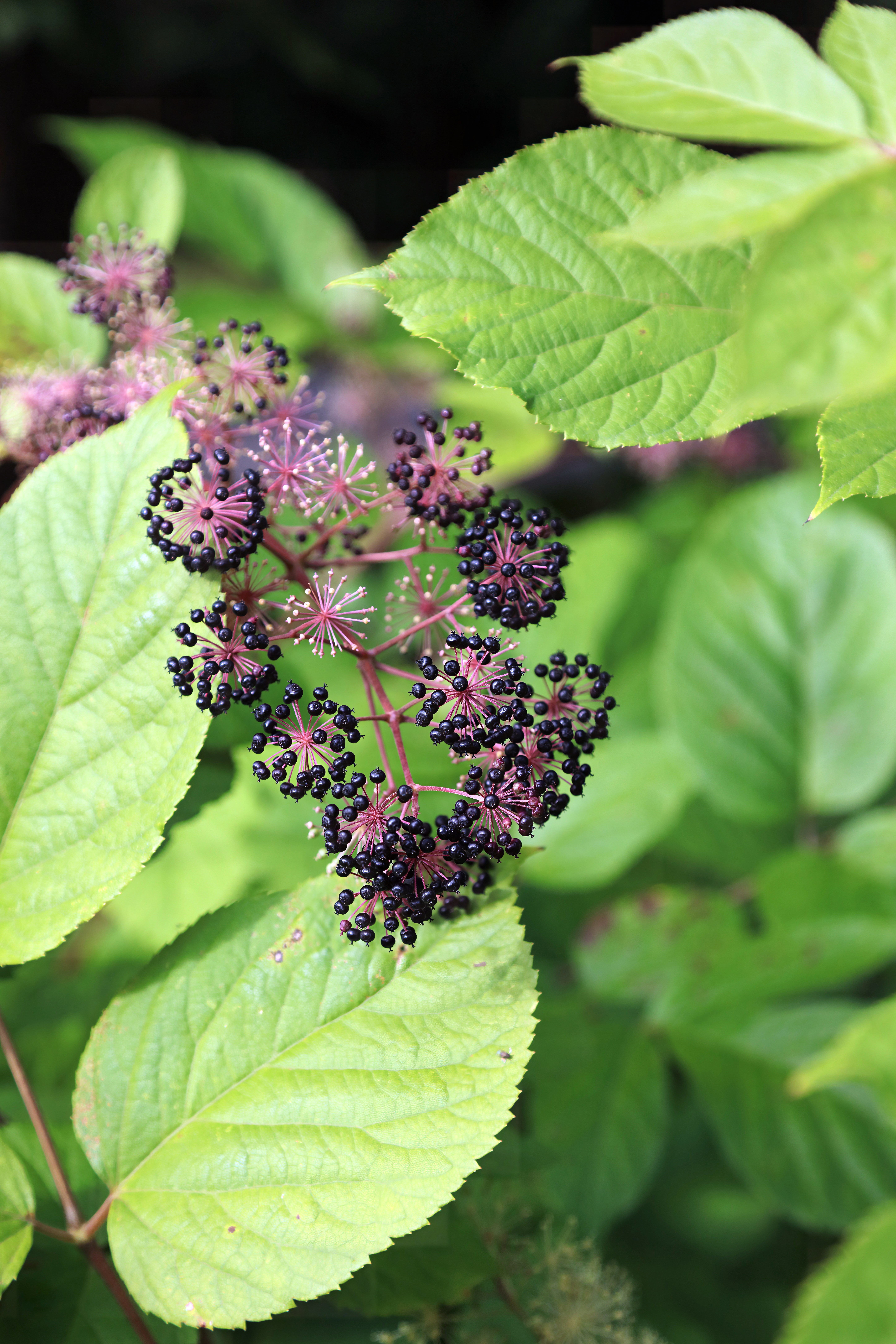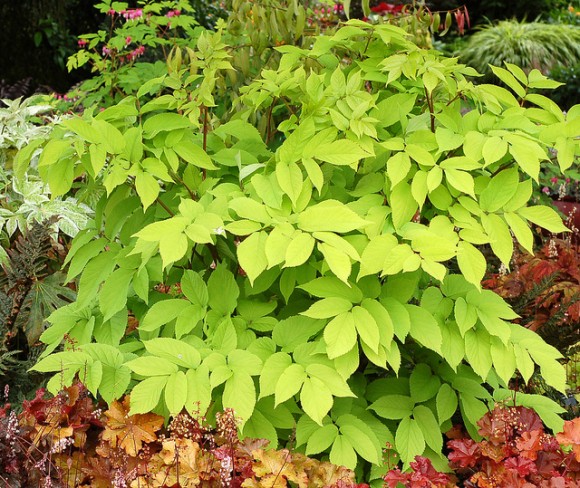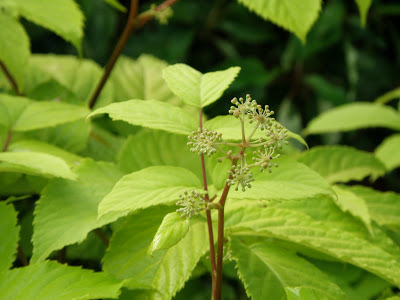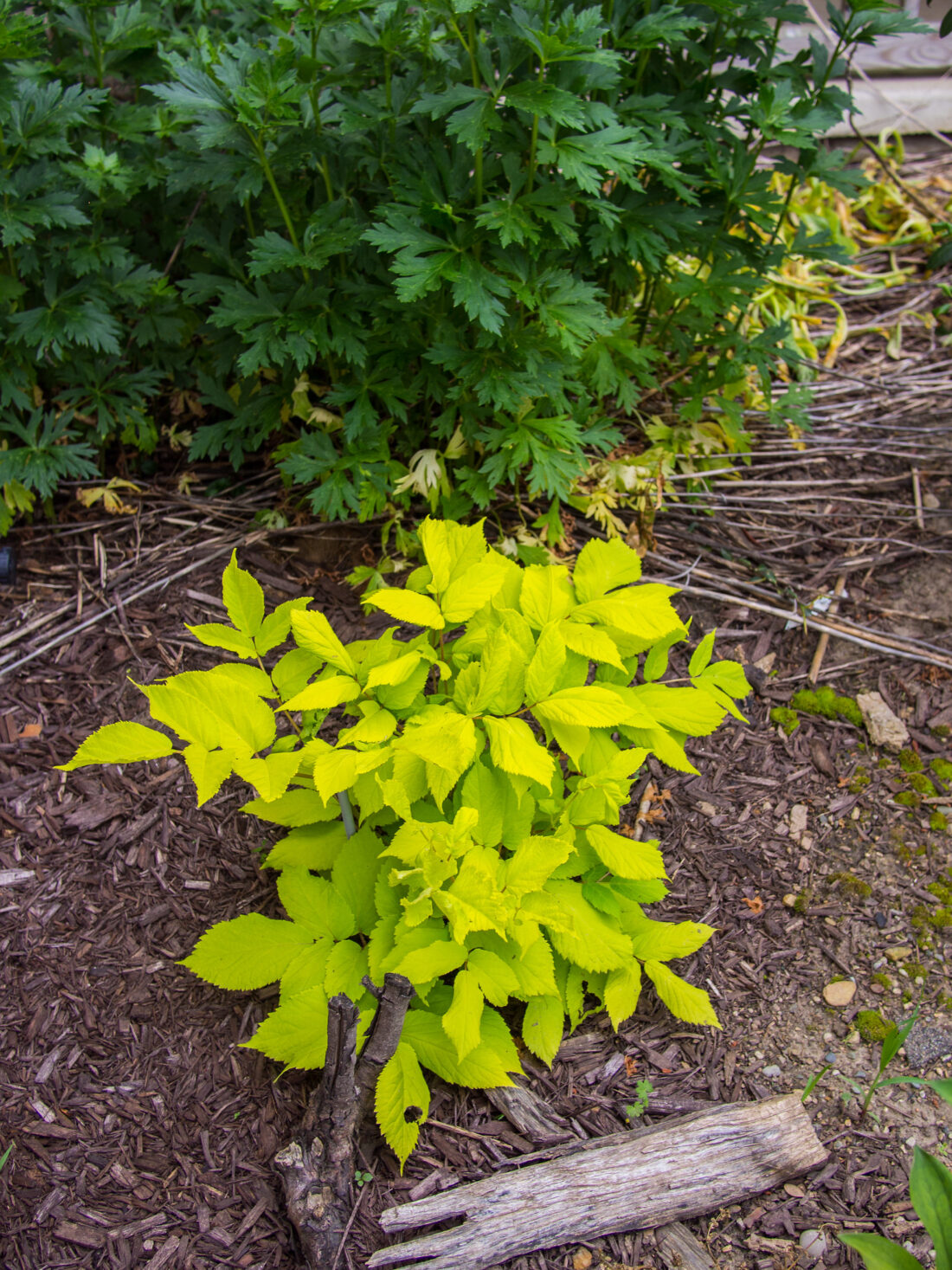A few years ago, I planted an Aralia cordata ‘Sun King’ in our shade garden, and ever since, I’ve been wondering why I didn’t do it sooner. This plant is one of those hidden gems—something you don’t see in every garden center, yet once you plant it, you wonder how you ever gardened without it.
‘Sun King’ is a bright, golden-leaved variety of Aralia cordata, also known as Japanese spikenard. The name alone—‘Sun King’—tells you what you need to know. It is a beacon of light in a shady garden, with chartreuse foliage that practically glows. Even in deep shade, where other gold-colored plants might fade to green, ‘Sun King’ holds its color remarkably well.
The first time I saw it, I had to do a double take. The leaves are bold and compound, almost like a tropical plant, but it thrives in temperate gardens. It emerges in early spring with a strong, mounded habit, quickly reaching three feet tall and wide, sometimes even larger if given the right conditions. By mid to late summer, the plant produces sprays of small, white flowers, which are followed by berries in late summer into early fall that birds love.

Why ‘Sun King’ is a Must-Have for Shade Gardens
Most shade-loving plants tend to be either textural and green (like ferns and hostas) or delicate and fleeting (like bleeding hearts). ‘Sun King’ is neither. It’s bold, architectural, and surprisingly low-maintenance. It doesn’t just fill space—it transforms a shady corner with its bright foliage and dense, shrubby form.
Some key benefits of growing ‘Sun King’ in your garden:
- Thrives in shade – Unlike many golden-leaved plants, which fade in deep shade, ‘Sun King’ holds its color well, adding brightness to darker areas.
- Fast-growing and adaptable – Reaches full size within a few seasons and is surprisingly drought-tolerant once established.
- Late-season interest – The delicate white flowers attract pollinators, and the deep purple berries provide food for birds.
- Deer-resistant – While no plant is completely deer-proof, Aralia cordata is not high on their menu, making it a great choice for gardens with browsing pressure.
Other Aralias to Consider
If you like ‘Sun King,’ you might want to explore some of the other aralias that bring dramatic foliage and strong structure to the garden. The genus Aralia includes both herbaceous perennials and woody shrubs, with species ranging from ground-hugging natives to towering tropical-looking giants.
- Aralia spinosa (Devil’s Walking Stick) – A native North American species with spiny stems, giant compound leaves, and cloud-like clusters of white flowers in summer. It’s a bold statement plant, but be warned—it suckers and can become a bit unruly in the wrong spot.
- Aralia elata (Japanese Angelica Tree) – Similar to A. spinosa, but with a more refined habit. The variegated cultivar ‘Silver Umbrella’ is particularly stunning, with bright white-edged foliage.
- Aralia racemosa (American Spikenard) – A herbaceous native relative of ‘Sun King’, this plant dies back in winter but emerges in spring with large, tropical-looking foliage and clusters of small red berries loved by wildlife.
- Fatsia japonica – If you live in a milder climate (zones 8-10), this evergreen aralia relative is a fantastic tropical-looking option for shade gardens, with huge, glossy leaves that add drama year-round.


How to Grow and Care for Aralia cordata ‘Sun King’
One of the best things about Aralia cordata ‘Sun King’ is how easy it is to grow. Despite its exotic appearance, it doesn’t require fussy conditions to thrive.
- Light: Best in part shade to full shade. It will tolerate some morning sun, but too much direct light can bleach the leaves.
- Soil: Prefers moist, well-drained soil, but it can handle drier conditions once established.
- Watering: Regular watering during the first growing season helps it establish deep roots.
- Spacing: Give it at least three feet of space—this plant fills out quickly and doesn’t like to be crowded.
- Winter Hardiness: Hardy in USDA zones 3-9, meaning it can handle a wide range of climates. It dies back to the ground in colder zones but returns reliably each spring.

Where to Use ‘Sun King’ in the Garden
Thanks to its bold foliage and adaptable nature, ‘Sun King’ is a fantastic addition to a variety of garden settings. Consider using it:
- As a focal point in a shade garden – The bright foliage provides contrast against darker greens.
- In mixed borders – Pairs well with hostas, ferns, and astilbes for a layered look.
- In woodland gardens – Blends beautifully with native plants and provides late-season flowers for pollinators.
- As a backdrop plant – Its size and dense habit make it a great backdrop for lower-growing shade perennials.
I’m excited to see how ‘Sun King’ continues to perform in my garden. It’s already proving to be one of the best shade plants I’ve ever grown, and I wish I had planted it sooner. If you’re looking for an easy-care, high-impact plant to brighten up a shady space, this is one to consider.
Do you grow any aralias in your garden? Let me know which ones are your favorites.
—Rodney
Images: Terra Nova Nursery flickr, gardenshorts.com
I wish my “Sun King” had grown and thrived as yours does. Mine continues to be pretty wimpy, in a high shade setting, after a couple of years here in 6A Central Ohio. Hoping it gets going soon!